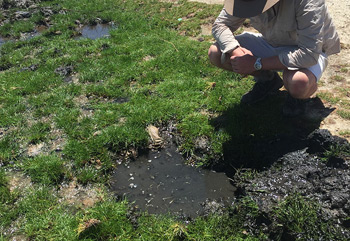(for more about Power Words, click here)
atmosphere The envelope of gases surrounding Earth or another planet.
element (in chemistry) Each of more than one hundred substances for which the smallest unit of each is a single atom. Examples include hydrogen, oxygen, carbon, lithium and uranium.
geology The study of Earth’s physical structure and substance, its history and the processes that act on it. People who work in this field are known as geologists. Planetary geology is the science of studying the same things about other planets.
helium An inert gas that is the lightest member of the noble gas series. Helium can become a solid at -458 degrees Fahrenheit (-272 degrees Celsius).
magnetic resonance imaging (MRI) An imaging technique to visualize soft, internal organs, like the brain, muscles, heart and cancerous tumors. MRI uses strong magnetic fields to record the activity of individual atoms.
radioactive decay A process by which an element is converted into a lighter element through the shedding of subatomic particles (and energy).
reservoir A large store of something. Lakes are reservoirs that hold water. People who study infections refer to the environment in which germs can survive safely (such as the bodies of birds or pigs) as living reservoirs.
uranium The largest naturally occurring element known. It’s called element 92, which refers to the number of protons in its nucleus. One form (isotope) is radioactive, which means it decays into smaller particles. The other form is stable.
volcano A place on Earth’s crust that opens, allowing magma and gases to spew out from underground reservoirs of molten material. The magma rises through a system of pipes or channels, sometimes spending time in chambers where it bubbles with gas and undergoes chemical transformations. This plumbing system can become more complex over time. This can result in a change, over time, to the chemical composition of the lava as well. The surface around a volcano’s opening can grow into a mound or cone shape as successive eruptions send more lava onto the surface, where it cools into hard rock.









